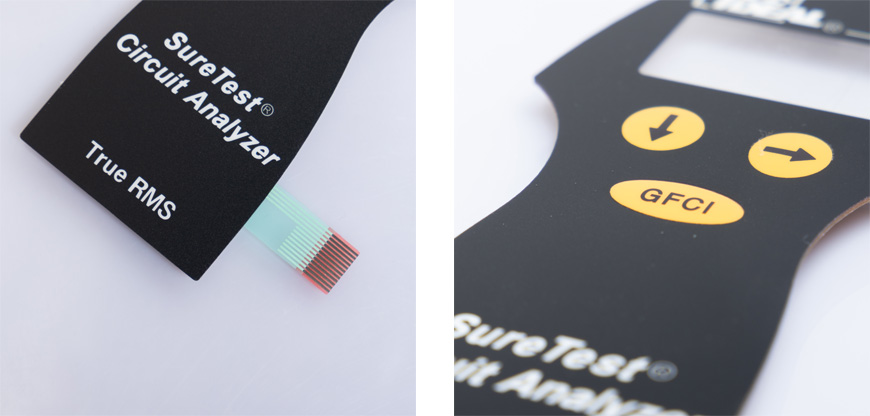
In today's fast-paced world, technology plays a pivotal role in simplifying our lives. One such innovation is the push button membrane switch. These versatile devices have found their way into countless applications, from household appliances to industrial equipment. In this article, we will explore the world of push button membrane switches, their construction, applications, advantages, and much more. So, let's dive right in!

Before we delve into the specifics of push button membrane switches, it's essential to grasp the basics of membrane switches. Membrane switches are user interfaces that consist of several layers of flexible materials. They are designed to be durable, reliable, and responsive, making them ideal for a wide range of applications.
A typical membrane switch consists of the following layers:
Graphic Overlay: This is the topmost layer, featuring printed graphics and labels for the buttons.
Upper Circuit Layer: This layer contains the conductive traces that register button presses.
Spacer Layer: This layer separates the upper and lower circuit layers, preventing accidental button presses.
Lower Circuit Layer: This layer features the switch's circuitry and contacts.
Rear Adhesive Layer: The bottom layer adheres the membrane switch to the device or surface.
Now that we have a basic understanding of membrane switches, let's focus on push button membrane switches specifically.
Push button membrane switches, as the name suggests, are equipped with buttons that users can press. These buttons provide tactile feedback, making them suitable for applications where users need to feel the actuation. They are commonly used in various industries, including:
1. Medical Devices
Push button membrane switches are used in medical equipment such as diagnostic machines and patient monitoring devices due to their reliability and ease of cleaning.
2. Consumer Electronics
Devices like TV remotes, microwave ovens, and coffee makers often incorporate push button membrane switches for user-friendly operation.
3. Industrial Control Panels
Industrial control panels and machinery utilize these switches for their durability and resistance to environmental factors.
Push button membrane switches offer several advantages:
Durability: These switches are designed to withstand millions of presses, ensuring long-term reliability.
Customization: The graphic overlay can be customized with specific designs, labels, and colors.
Tactile Feedback: Users can feel the button press, reducing the chances of accidental inputs.
Compact Design: Membrane switches are thin and save space in device design.
Cost-Efficiency: They are often more cost-effective than traditional mechanical switches.
Push button membrane switches have become an integral part of our daily lives. Let's explore some common applications:
1. Home Appliances
In households, you can find push button membrane switches in various appliances like washing machines, dishwashers, and air conditioners. Their reliability ensures seamless operation.
2. Automotive Industry
Modern cars utilize membrane switches in dashboard controls, ensuring ease of use and longevity.
3. Electronics
From TV remote controls to kitchen gadgets, push button membrane switches are everywhere, simplifying our interactions with technology.
Push button membrane switches have revolutionized the way we interact with devices, offering durability, customization, and tactile feedback. Their widespread use in various industries highlights their versatility and reliability. As technology continues to advance, these switches will likely play an even more significant role in our lives.
Are push button membrane switches waterproof?
Yes, many push button membrane switches are designed to be waterproof or resistant to liquids, making them suitable for various environments.
Can I design a custom graphic overlay for my membrane switch?
Absolutely! Membrane switches offer extensive customization options, including graphic overlays tailored to your specific requirements.
Do membrane switches require a power source?
Membrane switches do not require a power source themselves. They work by completing an electrical circuit when a button is pressed.
Are push button membrane switches easy to clean?
Yes, they are. Their smooth surface and sealed design make them easy to clean and maintain.
Where can I purchase quality push button membrane switches?
You can find a wide range of push button membrane switches from reputable manufacturers and suppliers online or through electronics distributors.